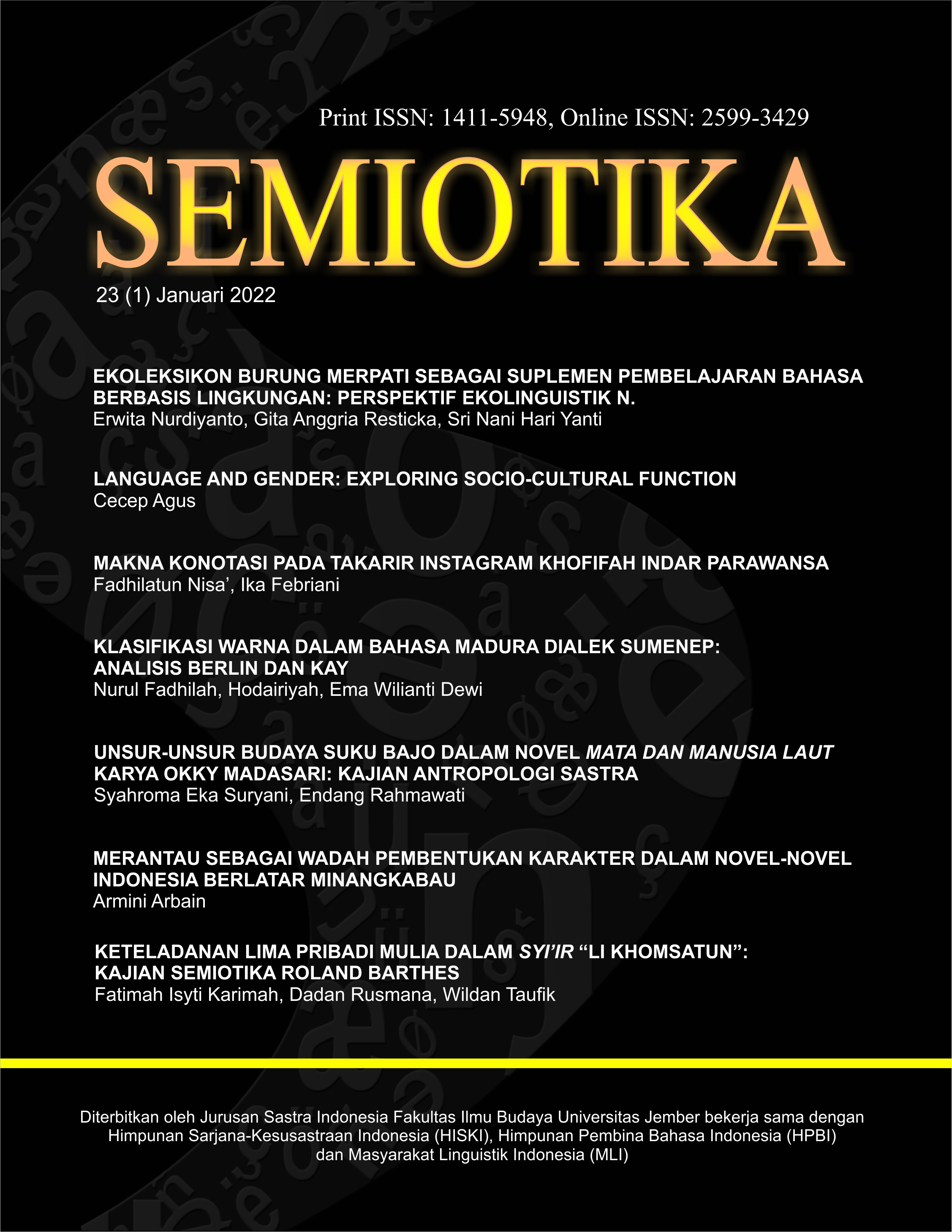KLASIFIKASI WARNA DALAM BAHASA MADURA DIALEK SUMENEP: ANALISIS BERLIN DAN KAY
DOI:
https://doi.org/10.19184/semiotika.v23i1.24294Keywords:
basic color, Berlin and Kay, color name, ethnolinguistics, MadureseAbstract
The goal of this research is classifying the basic and non-basic colors of Sumenep Madurese dialect. This research is descriptive qualitative in which the data were analyzed using the universal color theory of Berlin and Kay (1969) and also an ethnolinguistic approach. As a result, the Sumenep Madurese dialect has six basic color names, namely potÑ 'white', celleng 'black', mÑra 'red', bhiru 'green', konÑng 'yellow', and cokklat 'brown', and also three color names classified in non-basic colors, namely bhiru 'biru', bungo 'purple', and bu-abu 'gray'. The color vocabularies in Sumenep Madurese dialect are in the form of lingual unit of word, such as the naming of basic colors because they are monolexemic, and lingual unit of phrase, such as derived colors from the basic or non-basic colors. The implicational hierarchy of basic colors in the Sumenep Madurese dialect is different from the implicational hierarchy of basic colors in Berlin and Kay's theory which was the result of 80 world language studies. The environment and the different habits of speech communities influence this difference. In brief, language as a cultural product affects the formation of the color lexicon.
Downloads
Downloads
Published
Issue
Section
License
SEMIOTIKA has CC-BY-SA or an equivalent license as the optimal license for the publication, distribution, use, and reuse of scholarly work. Authors who publish with this journal retain copyright and grant the journal right of first publication with the work simultaneously licensed under a Creative Commons Attribution-ShareAlike 4.0 International License that allows others to share the work with an acknowledgment of the work's authorship and initial publication in this journal.
Attribution-ShareAlike
CC BY-SA


